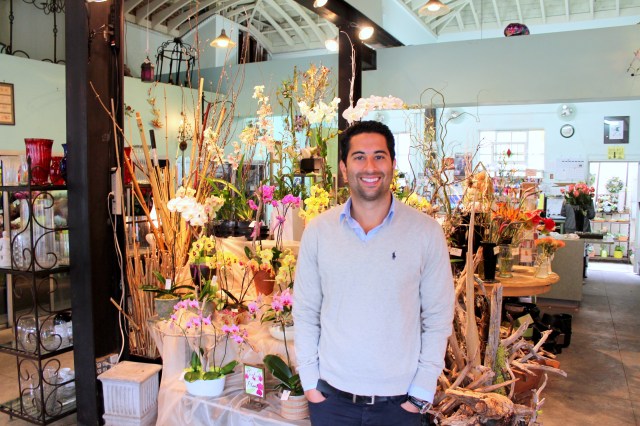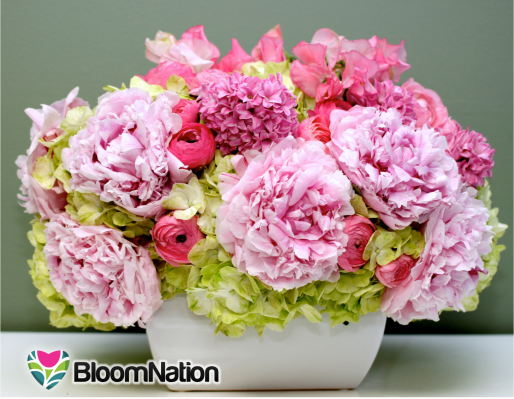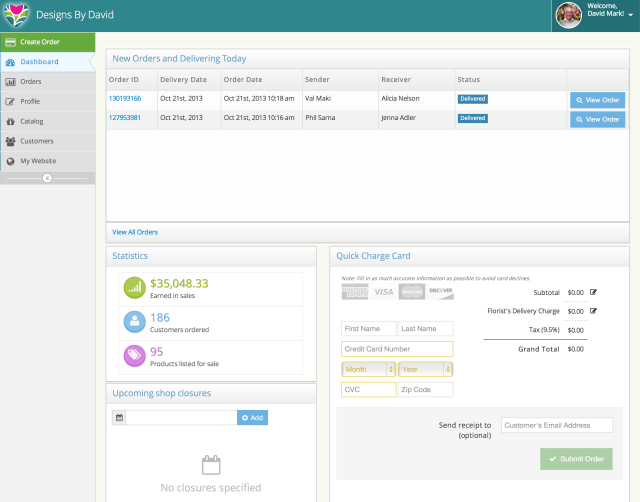BloomNation, a startup building a marketplace for florists and floral designers, has closed on $1.65 million in seed funding, the company is announcing today. The round was led by Chris Dixon at Andreessen Horowitz, and includes participation from Spark Capital, Chicago Ventures, and CrunchFund.* This is the first outside investment for BloomNation, which had previously been bootstrapped using founder money…oh, and poker winnings.
*Disclosure: CrunchFund founder Michael Arrington founded TechCrunch.
CEO and co-founder Farbod Shoraka left his job as an M&A banker to found BloomNation back in 2011, following his handling of a deal which gave him insight into the how the floral industry worked today. He brought on co-founders, David Daneshgar, a fellow Berkeley grad, to serve as head of corporate development, and Gregg Weisstein, who’s now BloomNation COO.
The fun part to this startup’s story is how, in its earliest days, the team raised $25,000+ to get things off the ground thanks to a game of cards. Daneshgar just happens to be a professional poker player and a World Series of Poker winner. So when BloomNation needed a little startup capital, he enrolled in a local tournament in L.A., and won.
Shoraka says he and Weisstein set themselves up in the casino’s cafe to keep working while Daneshgar played. And after making it to the final player and besting the last man standing besides himself, Daneshgar proclaimed, “it’s flower time.”
Who knows if he said those exact words, but Shoraka swears it to be true. And even if not, it sure makes for a good story, I’d say.
 What BloomNation has built in the many months since is a platform that aims to cut out the major floral players like 1800Flowers, FTD, and Teleflora by providing tools that enable local florists to reach customers themselves, but at scale. Essentially, it’s a community marketplace model – like an Etsy for flowers.
What BloomNation has built in the many months since is a platform that aims to cut out the major floral players like 1800Flowers, FTD, and Teleflora by providing tools that enable local florists to reach customers themselves, but at scale. Essentially, it’s a community marketplace model – like an Etsy for flowers.
Local florists are able to set up profiles on the BloomNation platform, then upload real photos (not stock photos) of their of their floral designs. In return, they get to keep a larger portion of their sales than when working with the so-called “floral wire services,” which most florists tend to dislike.
“Florists hate working with these services. They feel like order fillers and employees of these big marketing companies,” explains Shoraka. “We’ve brought the creativity back into the industry, and de-commoditized everything.”
He says that with the larger services, consumers pick from a catalog of stock photos, where pricing is already set, but not necessarily in a way that reflects the local cost structures at the nearby merchants who have to fulfill those orders. And half of the money paid by consumers for their arrangements ends up spent in fees before making its way to the florist. In addition, because the florist isn’t really interacting with customers directly, they don’t have an incentive to do their best job.
“They don’t get any brand recognition, so they end up putting in their older flowers or cutting corners just to get the delivery out of there,” Shoraka says.
The alternative for local florists is going the DIY route, or using third-party marketing solutions they find on their own. The BloomNation marketplace, launched a year ago, was a first step towards allowing florists to reach customers directly, instead of relying on the larger services.
But now BloomNation is launching the next phase of its platform, the Florist Business Center. This is a free suite of online tools that offers florists their own (white-labeled) website, emailing marketing and social media management tools, and point-of-sale system designed specifically for the floral industry. The florists can choose to use any piece to the system they like, all of it, or none, and there are no monthly fees or contracts to do so. Instead, BloomNation takes a small “success fee” on orders placed through the marketplace on the florists’ website. (Florists keep 90%).
“The wire services have thrived on the fact that these local businesses didn’t have these resources,” says Shoraka. “They didn’t have the time or the knowledge to get things going. BloomNation changes that.”
One of the niftier things that BloomNation allows for is something it calls “BloomSnap” – a way for the florist to communicate directly with the customer by sharing a photo of their own bouquet before it heads out for delivery. In the future, BloomNation wants to tie the florist and customer together even further, with a BloomNation mobile app, and notifications that alert customers to their delivery’s progress and completion.
The business has grown to 2,000 florists across 3,000 U.S. cities, big and small, though its stronghold is still in L.A. where BloomNation got its start. With the additional funding, the company is continuing product development, and doubling its now five-person team with new hires in engineering, marketing, design, product and more.

